Explore the Majestic Beauty of Cangshan Mountain: A Nature Lover’s Paradise
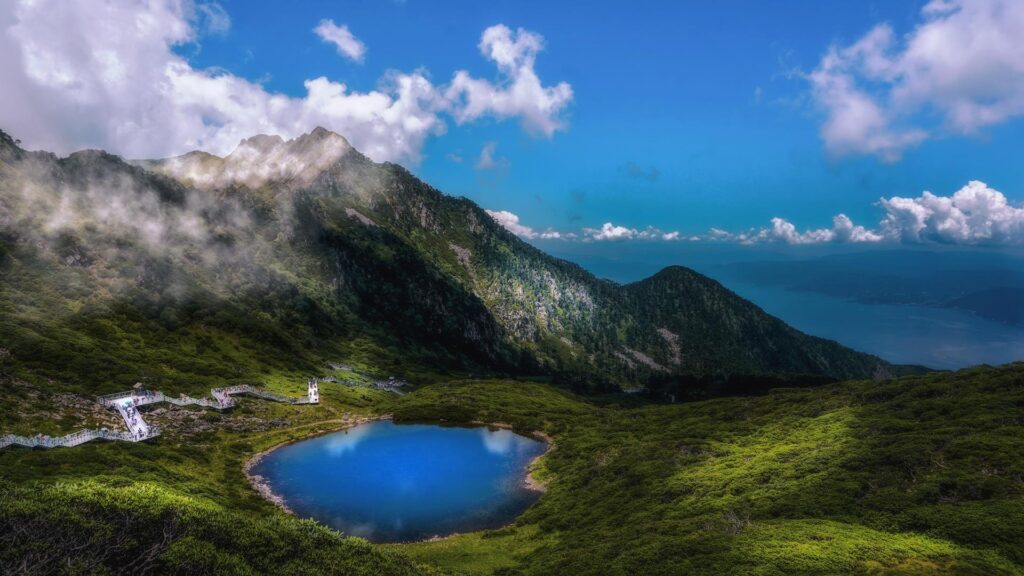
An Essential Guide to Visiting Cangshan Mountain
Nestled in the picturesque region of Dali, Yunnan Province, Cangshan Mountain rises majestically, captivating travelers with its stunning vistas and rich natural biodiversity. This mountain range, often shrouded in mystical clouds, boasts a plethora of hiking trails that cater to both seasoned adventurers and casual walkers alike. As you ascend to altitudes of over 2,900 meters, you’ll be rewarded with panoramic views of Erhai Lake and the charming town of Dali below, creating an unforgettable backdrop for your explorations.
Cangshan is not just about breathtaking landscapes; it’s also steeped in cultural significance. The area is dotted with ancient temples and historical sites, inviting visitors to delve deeper into the rich tapestry of local heritage. Whether you’re seeking solace in nature, engaging in invigorating hikes, or simply savoring the serene beauty, Cangshan Mountain offers a refreshing escape from the hustle and bustle of everyday life.
In this guide, we’ll navigate through essential tips and insights to ensure your visit to Cangshan is both memorable and seamless. From choosing the right trails to understanding the local flora and fauna, prepare to embark on an adventure that promises to leave a lasting impression. Let’s uncover the wonders of Cangshan Mountain together!
In This Guide
- An Essential Guide to Visiting Cangshan Mountain
- The Rich History and Legends of Cangshan Mountain
- Main Highlights: What You Absolutely Can’t Miss
- Planning Your Visit: A Practical Guide
- Tickets: Prices, Booking, and Tips
- How to Get There: A Complete Transportation Guide
- Local Cuisine and Accommodation Nearby
- Frequently Asked Questions
- Final Thoughts on Your Trip
The Rich History and Legends of Cangshan Mountain
Cangshan Mountain, a majestic range located just west of Dali in Yunnan Province, is not only a natural wonder but also a site steeped in rich history and legends that have captivated the imaginations of locals and travelers alike for centuries.
The mountain’s significance dates back to ancient times, serving as a sacred site for the indigenous Bai people who have resided in the Dali area for over a millennium. The Bai culture reveres Cangshan as a spiritual guardian, believing that the mountain embodies the essence of their ancestors. This belief is reflected in numerous local festivals and traditions that celebrate the mountain’s beauty and its importance to the community.
Throughout history, Cangshan has been a silent witness to the rise and fall of various dynasties in China. During the Nanzhao Kingdom (738-902 AD), the mountain served as a strategic location and a natural fortress, allowing rulers to oversee the surrounding areas, including the vital trade routes that passed through the region. The Nanzhao people built temples and shrines dedicated to mountain deities, which further solidified the connection between the people and this awe-inspiring landscape.
The legends surrounding Cangshan are as captivating as its vistas. One of the most famous tales is that of the “Cangshan Snow,” which refers to the snow-capped peaks that emerge during the winter months. Local folklore tells of a beautiful goddess who weeps for her lost love, and her tears manifest as the winter snow that blankets the mountain. This poignant story adds a layer of romanticism to the already stunning scenery, drawing visitors to experience the tranquility and beauty of the snow-kissed slopes.
The mountain is also intertwined with the rich tapestry of Buddhism in the region. Several ancient temples dot its slopes, including the renowned Gantong Temple, which dates back to the Tang Dynasty (618-907 AD). This temple, along with others, served as a place of worship and reflection for monks and pilgrims who sought solace in the serene surroundings of Cangshan.
Cangshan Mountain has not only shaped the cultural and spiritual life of the Bai people but has also inspired artists, poets, and scholars throughout the ages. Its towering peaks and lush valleys have become a muse for countless works of art and literature, capturing the essence of Yunnan’s natural beauty. The breathtaking views, especially from the various hiking trails and viewing platforms, continue to inspire awe and admiration in all who venture into its embrace.
Today, Cangshan remains a must-visit destination for international travelers seeking to immerse themselves in the rich history and legends that define this extraordinary mountain. Whether hiking its trails, visiting ancient temples, or simply soaking in the views, visitors are invited to connect with the stories that have shaped Cangshan into a symbol of beauty and spirituality, echoing through time.
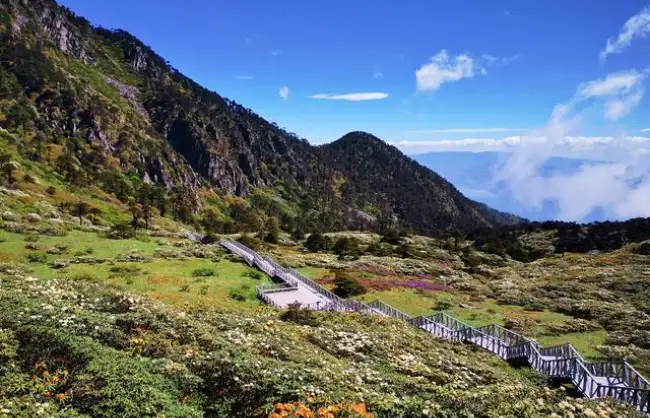
Cangshan Mountain.
Main Highlights: What You Absolutely Can’t Miss
When visiting Cangshan Mountain, a majestic range near Dali in Yunnan Province, there are several highlights that you absolutely cannot miss. This stunning natural landscape is renowned for its breathtaking views, diverse hiking trails, and unique cultural experiences. Here’s a detailed guide to the must-see attractions and activities that will make your trip unforgettable.
1. The Cable Car Experience
Kick off your adventure with a ride on the cable car that ascends to an impressive altitude of 2,900 meters (approximately 9,514 feet). This exhilarating journey not only offers a thrilling experience but also rewards you with panoramic views of the surrounding landscapes, including the shimmering Erhai Lake and the picturesque Dali below. For a truly unforgettable experience, try to catch the cable car early in the morning to enjoy the tranquility and avoid the crowds.
2. The Scenic 8km Hike
Once at the top, embark on the stunning 8-kilometer hike down the mountain. This trail is considered one of the best ways to experience Cangshan’s natural beauty. As you descend, you’ll be surrounded by lush vegetation, breathtaking vistas, and the serene sounds of nature. The hike is perfect for those who love the outdoors, and while the altitude may be challenging for some, the views are well worth the effort. Don’t forget to bring your camera!
3. Gorge Viewing Platform
After the hike, take a short walk to the gorge viewing platform. This hidden gem offers spectacular views of the gorge and surrounding peaks. The small climb to reach the platform is well worth the effort, as the sight of the rugged cliffs and dramatic landscape will leave you in awe. It’s a perfect spot to capture stunning photographs of Cangshan’s natural splendor.
4. Seven Ponds Scenic Area
For the more adventurous travelers, consider hiking up to the Seven Ponds, a series of beautiful alpine lakes that reflect the sky and mountains. This area is perfect for a leisurely stroll and offers a peaceful retreat amidst the natural beauty. Here, you can enjoy a picnic or simply relax while soaking in the stunning surroundings.
5. Cultural Experiences
Cangshan Mountain is not just about nature; it also offers a glimpse into the local culture. Consider visiting nearby temples, such as the Gantong Temple, where you can appreciate traditional architecture and learn about the area’s spiritual significance. Engaging with local guides can enrich your understanding of the rich history and culture that the region has to offer.
6. Flora and Fauna
Nature enthusiasts should keep an eye out for the diverse flora and fauna that inhabit the mountain. Cangshan is home to many unique species of plants and animals, making it a paradise for nature lovers and bird watchers. Take your time to explore the unique ecosystems as you hike, and you may even spot some rare wildlife.
7. Stargazing Opportunities
If you’re staying overnight in Dali, make sure to take advantage of the incredible stargazing opportunities offered by the mountain. The elevation and relative lack of light pollution create perfect conditions for observing the night sky. Bring a blanket, find a quiet spot, and marvel at the stars above.
8. Local Cuisine
Don’t miss the chance to savor some local cuisine in Dali after your mountain adventures. Many restaurants offer delicious Yunnan dishes, including mushroom specialties and local teas. A meal with a view of the mountains can be the perfect way to end your day.
Cangshan Mountain is a destination that combines natural beauty, adventure, and cultural richness. Whether you’re hiking the trails, enjoying the views from the cable car, or exploring the local culture, this mountain promises an unforgettable experience that will resonate long after your visit.
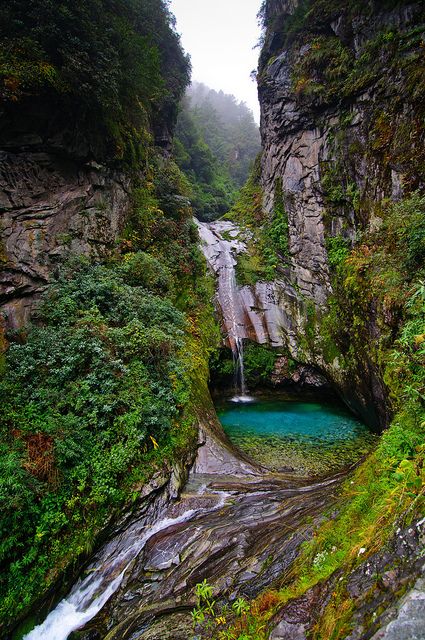
Cangshan Mountain.
Planning Your Visit: A Practical Guide
Visiting Cangshan Mountain is an experience that promises stunning landscapes, invigorating hikes, and a glimpse into the natural beauty of Yunnan Province. To make the most of your trip, here’s a practical guide to help you plan your visit.
Best Time to Visit
Cangshan Mountain is accessible year-round, but the best times to visit are during the spring (March to May) and autumn (September to November). These seasons offer mild temperatures and clear skies, perfect for hiking and enjoying the breathtaking views. Summer can be humid and rainy, while winter may bring colder temperatures and snow at higher altitudes.
Getting There
Cangshan Mountain is located just outside the city of Dali, making it easily accessible by public transport or taxi. If you’re coming from Dali’s Old Town, you can take a local bus or hire a taxi, which typically takes around 30 minutes.
Entrance Fees and Hours
The entrance to the Cangshan Mountain Scenic Area is open daily from 9:00 AM to 5:30 PM. It’s advisable to arrive early to avoid crowds and to make the most of your day. Entrance fees may vary, so check local resources for the latest information.
Cable Car and Hiking Trails
One of the most popular ways to explore Cangshan is by taking the cable car that ascends to approximately 2,900 meters. Here are a few tips on how to plan your hike:
-
Take the Right Cable Car: Opt for the cable car that goes to the higher altitude for spectacular views.
-
Plan Your Route: After reaching the top, hike down the scenic trails. An 8-kilometer walk downhill is popular and offers stunning vistas without the strenuous climb.
-
Watch for Altitude Effects: At 2,900 meters, some visitors may experience altitude sickness. Be sure to listen to your body and consider bringing oxygen if you’re concerned.
-
Must-See Spots: Don’t miss the gorge viewing platform, which is just a short uphill walk from the cable car exit. The views are worth the extra effort!
What to Bring
- Comfortable Hiking Shoes: Good footwear is essential for tackling the trails.
- Water and Snacks: Keep hydrated and energized with plenty of fluids and light snacks.
- Camera: The scenery is breathtaking, so be prepared to capture the views.
- Weather Gear: Depending on the season, pack layers to accommodate changing weather conditions.
Local Dining Options
After your hike, treat yourself to a meal at one of the nearby restaurants. Popular options include:
– La Dolce Vita: An Italian café offering a variety of vegetarian-friendly dishes.
– Li Coffee: A cozy spot for a refreshing drink and light snacks.
Additional Activities
Besides hiking, Cangshan Mountain offers opportunities for photography, bird-watching, and even mushroom picking during the right seasons. Explore the surrounding areas, including Erhai Lake and the historic Three Pagodas, to enrich your travel experience.
Safety Tips
- Stay on Designated Trails: This ensures both your safety and the preservation of the natural environment.
- Check Weather Conditions: Be aware of changing weather patterns, especially during rainy seasons.
- Travel Insurance: Consider purchasing travel insurance that covers hiking and outdoor activities.
By following this guide, you’re sure to have a memorable visit to Cangshan Mountain, filled with adventure and stunning natural beauty. Enjoy your journey!

Cangshan Mountain.
Tickets: Prices, Booking, and Tips
Visiting Cangshan Mountain (苍山) is a breathtaking experience that promises stunning views and invigorating hikes. To make the most of your journey, it’s essential to understand the ticket prices, booking options, and a few insider tips to ensure a smooth adventure.
Ticket Prices
As of 2023, the standard entrance fee for Cangshan Mountain is approximately 80 RMB (around $12 USD). This fee grants you access to the mountain’s various trails and experiences. If you prefer a more leisurely ascent, you can opt for one of the cable car services, which typically costs an additional 30 RMB (about $5 USD) for a one-way trip.
Booking Options
Tickets can be purchased at the entrance of Cangshan Mountain, but for a hassle-free experience, especially during peak tourist seasons, consider booking online. Several tour operators offer packages that include guided hikes and cable car rides. Here are a few popular options:
- Private Hiking Tour: Approximately $190 for a 6-hour tour.
- 2-Day Dali Tour: Includes Cangshan and Erhai Lake experiences, starting at $350.
- 1-Day Dali Tour: Focuses on the highlights, including Cangshan, for around $195.
It’s advisable to reserve these experiences in advance to secure your spot and avoid long waits.
Tips for Visiting
-
Arrive Early: To fully enjoy the mountain before the crowds arrive, aim to reach Cangshan by 8:30 AM. This will not only enhance your experience but may also allow you to avoid paying the entrance fee if you arrive before the official opening time.
-
Choose the Right Cable Car: There are multiple cable cars servicing the mountain, but for the best views and access to the hiking trails, take the cable car that ascends to 2,900 meters. This will set you up for a spectacular downhill hike rather than an exhausting climb.
-
Pack Essentials: Bring water, snacks, and sunscreen. Depending on your fitness level, consider carrying oxygen canisters, as altitude sickness can affect some visitors.
-
Explore the Trails: While many visitors opt to ride the cable car both ways, walking downhill allows you to soak in the breathtaking scenery at a more relaxed pace. Be sure to take the detour to the gorge viewing platform for an unforgettable view.
-
Check Weather Conditions: Cangshan’s weather can be unpredictable. Always check the forecast and be prepared for sudden changes, which can affect hiking trails and cable car operations.
By planning ahead, securing your tickets, and following these tips, your visit to Cangshan Mountain will be an unforgettable highlight of your travels in Yunnan Province. Enjoy the majestic landscapes and the tranquility of this stunning natural wonder!
How to Get There: A Complete Transportation Guide
Getting to Cangshan Mountain is an adventure in itself, offering a variety of transportation options for international travelers. Nestled near the picturesque city of Dali in Yunnan Province, this stunning mountain range is easily accessible and promises breathtaking views and unforgettable hiking experiences. Here’s a comprehensive guide to help you navigate your journey to Cangshan Mountain.
Arriving in Dali
By Air
The nearest airport is Dali Airport (DLU), which is well-connected to major cities in China such as Kunming, Chengdu, and Beijing. Upon arrival, you can take a taxi or use a ride-hailing app to reach the city center, which is approximately 30 kilometers (about 30 minutes) away.
By Train
Dali is also accessible by train, with several options available from cities like Kunming and Lijiang. The Dali Railway Station is located about 15 kilometers from the city center. From the station, you can take a taxi or a local bus to reach your accommodation or the Cangshan Mountain area.
By Bus
Intercity buses connect Dali to various destinations across Yunnan. The Dali Bus Station has regular departures from cities like Kunming and Lijiang. Once you arrive in Dali, you can easily find local transportation to Cangshan Mountain.
Getting to Cangshan Mountain
By Taxi or Ride-Hailing App
Once you’re in Dali, the most convenient way to reach Cangshan Mountain is by taxi or a ride-hailing service like Didi. This allows for flexibility and comfort as you can directly travel to the cable car stations, which are the primary access points to the mountain.
Public Transport
Local buses run from Dali city center to the base of Cangshan Mountain, especially to popular starting points like the Zhonghe Cable Car and Gantong Cable Car. Make sure to check the bus schedules, as they may vary throughout the day.
Cable Car Access
Cangshan Mountain boasts two main cable car stations: Zhonghe Cable Car and Gantong Cable Car.
-
Zhonghe Cable Car: This is the most popular option, taking you to an altitude of 2,900 meters. It’s highly recommended for those who want to enjoy stunning views without the strenuous hike up. Arrive early to avoid long queues and enjoy the mountain almost to yourself.
-
Gantong Cable Car: This cable car offers another perspective of the mountain but is generally less frequented. It also provides access to various trails and scenic spots.
Hiking Trails
Once at the top, you can choose to hike down along the marked trails. A popular route is the 8-kilometer descent, which allows you to appreciate the natural beauty of the area without the strenuous climb. Ensure you wear appropriate hiking shoes and stay hydrated, especially at higher altitudes.
Essential Tips
- Plan Ahead: Check the weather and park conditions before your visit. Certain trails may be closed due to weather or maintenance.
- Timing: Try to start your day early, ideally before 8:30 AM, to avoid crowds and maximize your experience on the mountain.
- Currency: Keep some cash (RMB) on hand for entrance fees and local purchases.
- Altitude Awareness: Be mindful of altitude sickness. If you’re sensitive, consider taking oxygen with you, especially if you plan to hike or explore at higher elevations.
Final Thoughts
Cangshan Mountain is not just a destination; it’s an experience that immerses you in the natural beauty of Yunnan Province. Whether you opt for the cable car or choose to hike, the journey to this majestic mountain will be filled with stunning vistas and unforgettable moments. Prepare for your adventure and enjoy all that Cangshan has to offer!
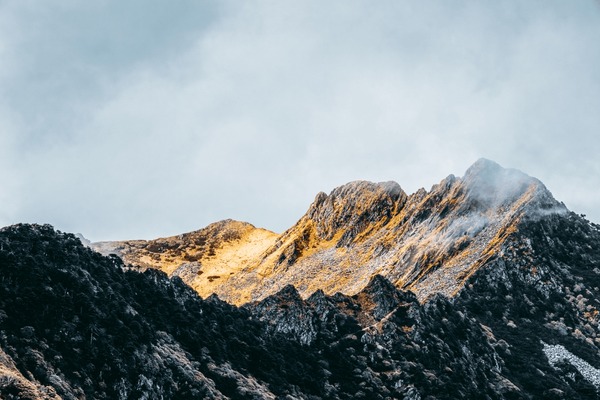
Cangshan Mountain.
Local Cuisine and Accommodation Nearby
When exploring the breathtaking landscapes of Cangshan Mountain, it’s essential to indulge in the local cuisine and find comfortable accommodations to enhance your experience. The region surrounding Cangshan is rich in culinary delights and offers various options for travelers looking to unwind after a day of adventure.
Culinary Delights
-
Cangfengqingzhen Grill
Located just a short distance from the mountain, this charming eatery specializes in authentic Yunnan cuisine. The menu features an array of local dishes prepared with fresh, locally-sourced ingredients. Be sure to try their grilled meats and traditional stir-fried vegetables, which perfectly capture the essence of Yunnan’s culinary heritage. -
Lao ShaGuo BaiZu NongJia Cai
A delightful place to experience Szechuan flavors, this restaurant is known for its spicy dishes and warm atmosphere. The menu offers a variety of options, from classic hot pot to regional specialties that are sure to tantalize your taste buds. -
Li Coffee
For a more relaxed experience, head over to Li Coffee, where you can enjoy a selection of high-quality brews in a cozy setting. Their homemade pastries and light snacks make it a perfect spot to recharge after your hike. -
La Dolce Vita
If you’re in the mood for Italian cuisine, La Dolce Vita is a fantastic choice. Located approximately two miles from the mountain, this restaurant serves delicious pizzas and pasta dishes, catering to both vegetarians and meat lovers alike.
Accommodations
-
Dali Baiyun Hotel
Nestled at the foot of Cangshan Mountain, this hotel offers stunning views and comfortable rooms. With modern amenities and a welcoming atmosphere, it’s an ideal base for exploring the mountain and the surrounding area. -
The Linden Centre
For a truly unique experience, consider staying at The Linden Centre. This boutique hotel is situated in a beautifully restored traditional courtyard house and offers a blend of luxury and local culture. Guests can enjoy the serene gardens, exquisite meals, and personalized service. -
Dali Mountain Villa
Just a short drive from the Cangshan trails, this villa provides a peaceful retreat for nature lovers. With spacious rooms and beautiful gardens, it is perfect for unwinding after a day of hiking while soaking in the natural beauty of the region. -
Cangshan Mountain Resort
Located conveniently near the cable car station, this resort offers easy access to the hiking trails. The accommodations are comfortable and include options for both families and solo travelers, making it a versatile choice for different types of visitors.
Conclusion
Whether you’re savoring local flavors or resting in a cozy accommodation, the area around Cangshan Mountain offers a delightful blend of experiences that will make your visit unforgettable. Enjoy the stunning scenery, indulge in the rich culinary traditions, and find a comfortable place to rest as you embark on your adventure in this breathtaking region of China.
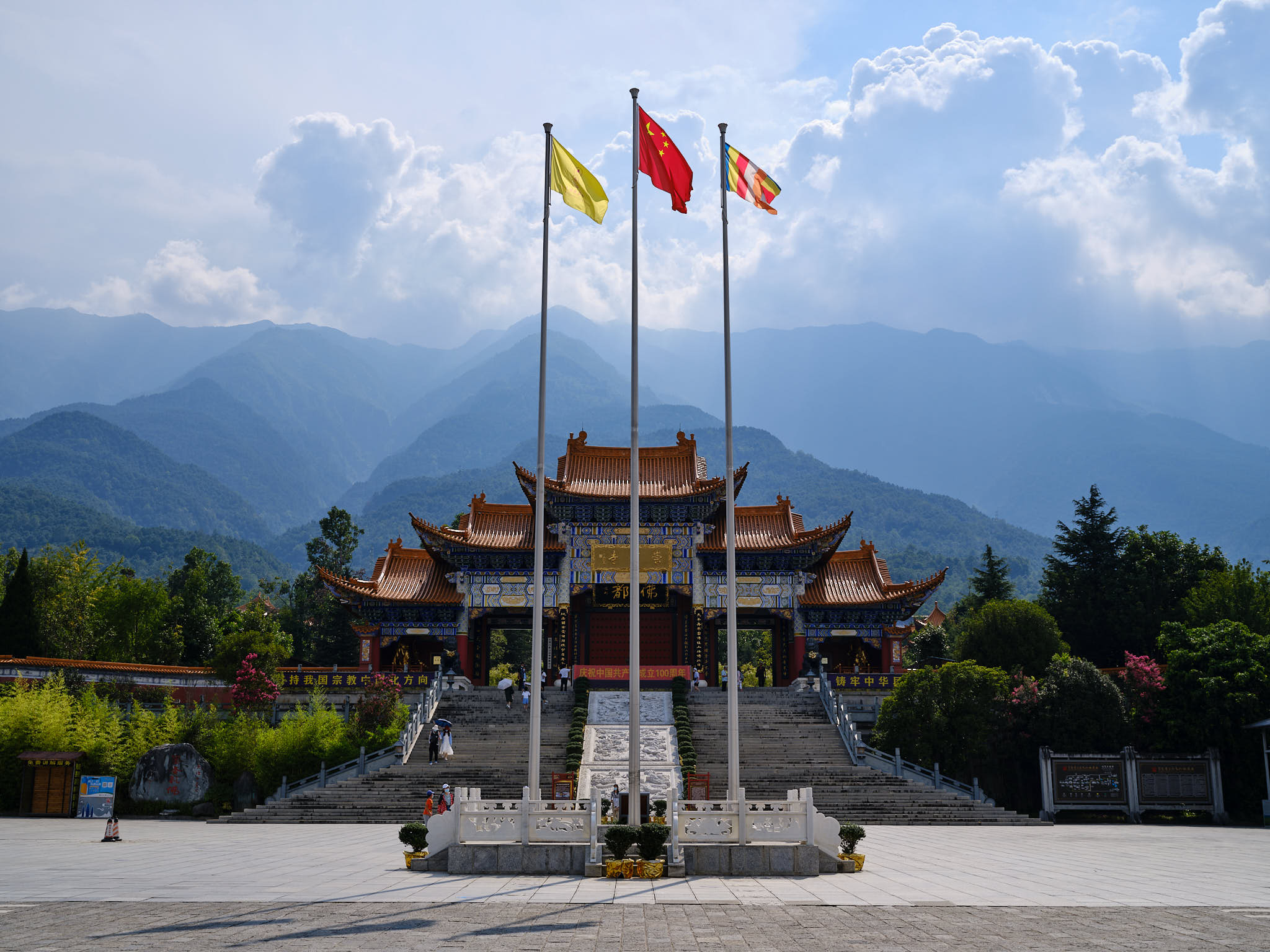
Cangshan Mountain.
Frequently Asked Questions
Frequently Asked Questions About Cangshan Mountain
-
What is the best time to visit Cangshan Mountain?
The best time to visit Cangshan Mountain is during the spring (March to May) and autumn (September to November) seasons. During these months, the weather is mild, and you’ll find the landscapes particularly beautiful with blooming flowers or vibrant foliage. -
How can I get to Cangshan Mountain from Dali?
Cangshan Mountain is easily accessible from Dali, which is about a 30-minute drive away. You can take a taxi or a local bus to the base of the mountain. Many travelers also opt for guided tours that include transportation. -
Are there any hiking trails suitable for beginners?
Yes, Cangshan Mountain offers several trails suitable for beginners. The popular 8-kilometer hike from the cable car station at 2,900 meters down to the base is a great option, providing stunning views without the challenge of steep ascents. -
What should I bring for my hike?
It’s essential to wear comfortable hiking shoes and bring plenty of water, snacks, and sunscreen. Weather can change quickly at higher elevations, so consider bringing a light jacket. If you’re concerned about altitude sickness, it might be wise to carry oxygen canisters. -
Is there an entrance fee for Cangshan Mountain?
Yes, there is an entrance fee to access Cangshan Mountain. Prices may vary, so check current rates before your visit. If you plan to use the cable cars, additional fees will apply. -
What facilities are available on the mountain?
Cangshan Mountain has several facilities, including rest areas, viewing platforms, and food vendors. However, it’s advisable to carry your own food and drinks to ensure you have everything you need during your hike. -
Can I take a cable car to the top of the mountain?
Absolutely! There are two cable car stations, but the one that takes you to 2,900 meters is recommended for breathtaking views. Many visitors choose to take the cable car up and hike down for a more manageable experience. -
What can I do if I encounter altitude sickness?
If you start to feel symptoms of altitude sickness, such as dizziness or nausea, it’s crucial to descend to a lower altitude immediately. Rest and hydrate, and if symptoms persist, seek medical assistance. Listening to your body is key while hiking in high elevations.
Final Thoughts on Your Trip
As your journey through Cangshan Mountain draws to a close, take a moment to reflect on the breathtaking sights and experiences that this stunning locale has to offer. Whether you found yourself soaring high above the lush valleys in a cable car or trekking along the invigorating trails at an altitude of nearly 2,900 meters, Cangshan is a place that ignites the spirit of adventure.
The picturesque views of Erhai Lake and the charming Dali town serve as a perfect backdrop to the rich tapestry of nature that surrounds you. Each step taken along the trails unveils new wonders, from lush landscapes to serene ponds, allowing you to connect deeply with the tranquility of the mountains.
For many, the memories created here linger long after the trip has ended—moments of laughter shared with fellow hikers, the thrill of conquering new heights, or simply the quietude found in nature’s embrace. As you leave, may you carry a piece of Cangshan in your heart, inspiring you to explore further and embrace the beauty of our world. Until next time, happy travels!